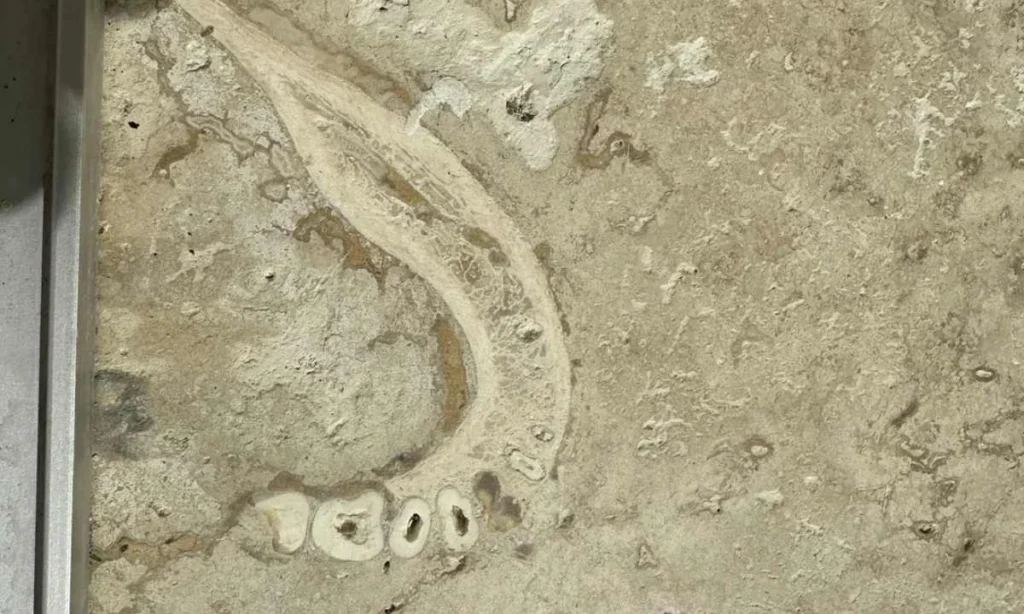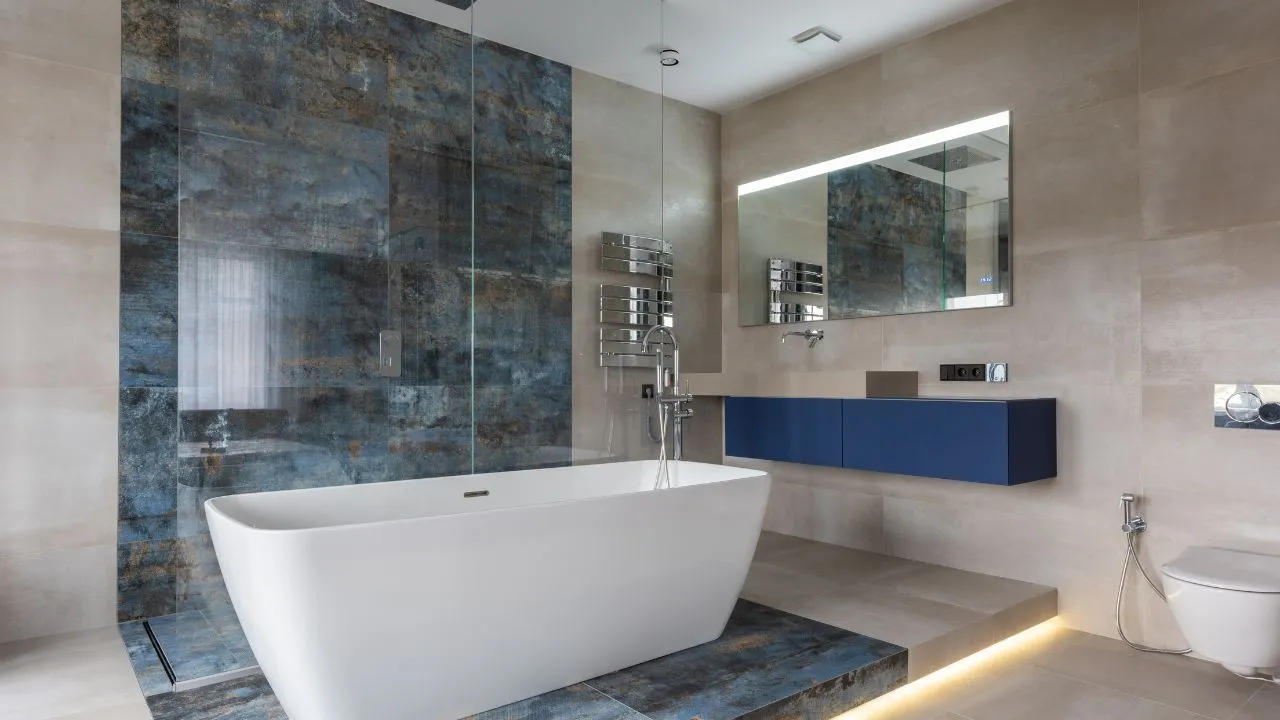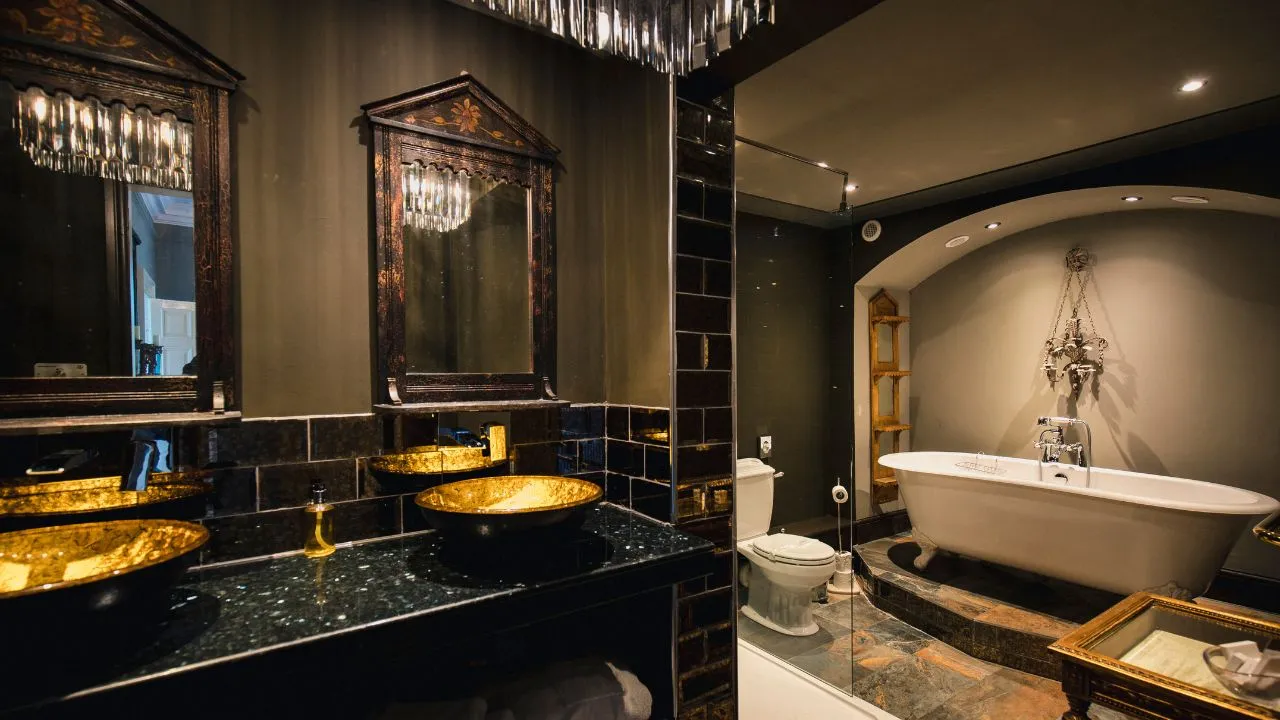Skilled Tradies is excited to bring you a series of mysteries and out-of-the-ordinary stories related to renovations across the world. The stories are captured from varied sources and renovators worldwide; this is one of the many intriguing stories to come.
Discovering a piece of ancient history right in your home is not something that happens to everyone. That’s exactly what happened to a family in Europe while renovating their bathroom. What appeared to be an ordinary tile revealed something extraordinary: a section of what experts believe is a human jawbone.
The discovery was made by a dentist who immediately noticed the distinct shape of the bone embedded in a travertine stone tile. “I spotted the mandible because I am a dentist, and it looked very familiar,” he shared. At first, he thought it was a fossil from an animal, but upon closer inspection, he realized it looked unmistakably human.
The find left the family with a mix of curiosity and unease. To seek answers, the dentist posted about the jawbone on Reddit, which eventually led to insights from a leading expert.
The Shocking Discovery
The Reddit post caught the attention of John Hawks, a professor of anthropology at the University of Wisconsin–Madison and an expert in paleoanthropology—the study of human evolution through fossils and archaeological records. Hawks analyzed the tile and provided fascinating insights into how such a find could occur.
According to Hawks, fossils forming in travertine stone is not uncommon. However, they are often overlooked during quarrying and production. “Quarries rough-cut travertine and other decorative stone into large panels, doing basic quality checks for gaps and large defects on the rough stone before polishing,” Hawks explained. “Small defects and inclusions are the reason why people want travertine in the first place, so they don’t merit special attention.”
The dentist also discovered that the tile was sourced from Turkey, a region known for its travertine quarries. Further inspection of other tiles revealed more fossil-like marks, though none as significant as the potential jawbone.
Hawks described the jawbone’s significance, stating, “Most will be hard to recognize. Random cross-sections of hominin bones are tough to make out from other kinds of fossils without a lot of training.”
He suggested that similar fossils might be hiding unnoticed in homes worldwide, waiting to be discovered.
Understanding Travertine and Fossil Formation
Travertine is a type of limestone formed around natural springs. The process involves water rich in dissolved calcium carbonate. When the water evaporates or cools, it leaves behind deposits that harden into stone. Over time, organic materials like bones can become trapped and fossilized within these deposits.
Because travertine tiles are valued for their imperfections, fossils are often not identified during production. Hawks noted that this lack of close inspection allows fossils to slip through unnoticed. “Certainly, somebody has more pieces of the mandible,” he said. “If you take another look at your shower wall and suspect an ancient human is looking back at you, it might actually be one.”
Historical and Scientific Significance
Experts estimate the jawbone could be between 100,000 and 1,000,000 years old. If confirmed, it could belong to a species like Homo erectus, shedding light on human evolution. Such a find is rare and valuable, akin to discovering an artifact like the Mona Lisa.
“One of the anthropologists told me it is like finding the Mona Lisa; you cannot sell it, you have to put it in a museum,” the dentist shared. The implications for science and history are profound, offering a glimpse into the lives of our ancient ancestors.
The Family’s Next Steps
While the family was intrigued by the discovery, they were also concerned about the potential disruption to their home. “My parents did express concern about having a paleoarchaeologist team destroying their home,” the dentist admitted.
Despite these worries, they plan to hand over the tile to experts for further study. The jawbone may eventually find its way into a museum or contribute to academic research, preserving its significance for generations to come.
Conclusion
This story blends mystery, history, and science, reminding us of the hidden treasures that might be lurking in the most unexpected places. From bathroom renovations to uncovering ancient fossils, the discovery is a testament to the fascinating ways history can resurface in everyday life.
Who knows what other hidden stories lie within the walls of old homes? This peculiar find made their renovation project unforgettable. If you’ve ever unearthed something surprising in your own home, share your story—who knows, it might just reveal a fascinating piece of history. Stay with us for more mysteries in bathroom renovation.
Also read,




